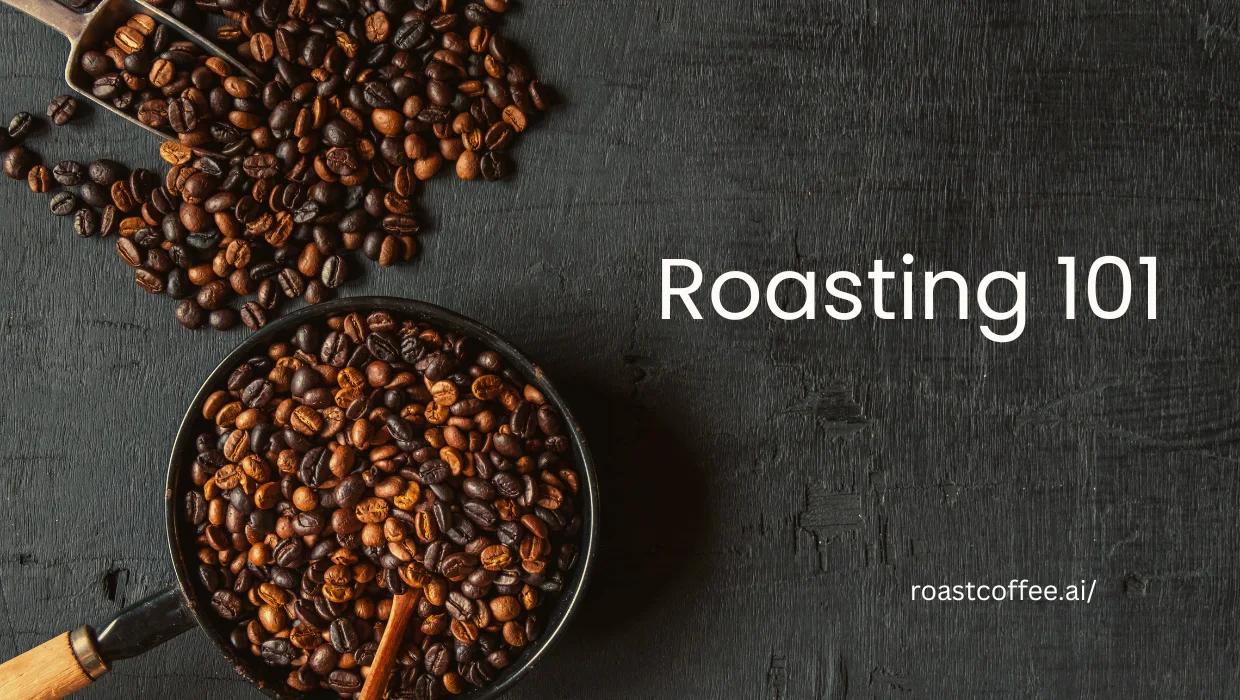Introduction
Welcome to the first chapter of our “A to Z of Coffee” series!
Before your coffee even touches a roaster or brews into your cup, it begins its life as a cherry on a tree — nurtured by soil, climate, and human hands. In this opening post, we dive into the fascinating early stages of coffee’s journey, focusing on how beans are grown, processed, and prepared as green coffee.
By understanding where your coffee comes from — the varietals, altitudes, and post-harvest methods — you’ll begin to see (and taste) just how much craftsmanship goes into every sip. Let’s explore the building blocks of flavor, one bean at a time.
The Coffee Glossary: Cultivation & Processing
Acaia: A coffee variety, primarily grown in Brazil, known for its large beans and high yield. It is a natural mutation of the Mundo Novo cultivar.
Altura: Spanish for “height,” often used in the names of Latin American coffees to indicate high-grown beans (e.g., “Mexico Altura”). Higher altitudes generally result in denser, more complex beans.
Anaerobic Fermentation: A coffee processing method where coffee cherries are fermented in an oxygen-free environment (sealed tanks) for a controlled period. This can lead to unique and intense flavor profiles, often with notes of fruit, wine, or spices.
Arabica: Coffea Arabica, the most widely cultivated species of coffee, accounting for about 60-70% of global production. Known for its delicate flavor, aromatic complexity, and lower caffeine content compared to Robusta. It typically grows at higher altitudes.
Bean Belt: The equatorial region of the world, roughly between the Tropics of Cancer and Capricorn, where coffee can be grown commercially due to suitable climate conditions.
Bourbon: A natural mutation of the Arabica coffee varietal, originating from Yemen and introduced to Bourbon Island (now Réunion). It’s known for its complex acidity and sweet, caramelly notes.
Cascara: The dried fruit skin of the coffee cherry, often brewed as a tea. It has a sweet, fruity flavor.
Catimor: A hybrid coffee varietal created from a cross between Caturra and Timor coffee. It’s known for its disease resistance but can sometimes have a less refined cup quality than pure Arabica.
Catuai: A hybrid coffee varietal developed in Brazil, a cross between Mundo Novo and Caturra. It’s known for its high yield and compact growth, making it suitable for high-density planting.
Caturra: A natural mutation of the Bourbon varietal, discovered in Brazil. It’s a dwarf varietal, known for its high yield and bright acidity, often grown in Central and South America.
Cherry: The fruit of the coffee tree, which typically contains two coffee beans (seeds) inside.
Direct Trade: A sourcing model where coffee roasters purchase green coffee directly from farmers or cooperatives, bypassing intermediaries. This often leads to higher prices for farmers and greater transparency.
Dry Process (Natural Process): A coffee processing method where the entire coffee cherry is dried in the sun, either on patios or raised beds, before the bean is removed. This method often imparts fruity, sweet, and sometimes wine-like notes to the coffee.
Fair Trade: A certification system designed to ensure that coffee farmers receive a fair and stable price for their coffee, promoting sustainable development and improved social and environmental standards.
Fermentation: In coffee processing, this refers to the breakdown of mucilage (sticky layer) surrounding the coffee bean, either through enzymatic action (wet process) or microbial action (dry/anaerobic process). It significantly impacts flavor.
Green Coffee: Unroasted coffee beans. These are the raw agricultural product that is shipped globally before being roasted.
Hard Bean (HB): A classification for green coffee beans grown at high altitudes, typically above 4,000 feet (1,200 meters). High altitude beans are denser and generally considered to have better flavor potential.
Honey Process (Pulped Natural): A coffee processing method where the skin and some of the pulp are removed from the coffee cherry, but a significant amount of the sticky mucilage layer is left on the bean to dry in the sun. This method can impart sweetness and body.
Hulling: The process of removing the parchment layer (and any remaining dried mucilage or fruit skin) from dried green coffee beans.
In-Season Coffee: Green coffee beans that have been recently harvested and processed, indicating optimal freshness and flavor potential.
Longberry: A specific varietal of coffee bean, often referring to a type of Arabica with elongated beans, such as some Ethiopian varieties.
Milling: The collective term for the processes that remove the outer layers of the coffee cherry (skin, pulp, mucilage, parchment) to reveal the green coffee bean.
Moisture Content: The percentage of water present in green coffee beans. It’s an important factor in storage stability and roasting performance.
Monsooned Coffee: A unique processing method from India where green coffee beans are exposed to monsoon winds and humidity for several months. This process reduces acidity and develops earthy, musty, and spicy notes.
Mucilage: The sticky, sugary layer surrounding the coffee bean inside the cherry, located between the pulp and the parchment. It’s removed during processing.
Mundo Novo: A natural hybrid coffee varietal of Bourbon and Typica, developed in Brazil. It’s known for its high yield and disease resistance, producing a full-bodied cup.
New Crop: Green coffee beans from the most recent harvest, indicating freshness and potentially vibrant flavors.
Old Crop: Green coffee beans that have been stored for an extended period after harvest, often resulting in a loss of vibrancy and a more muted flavor profile compared to new crop.
Organic Coffee: Coffee grown without the use of synthetic pesticides, herbicides, or fertilizers, following certified organic farming practices.
Parchment Coffee: Green coffee beans that are still encased in the dried, papery “parchment” layer after processing. This layer is removed during hulling.
Peaberry: A natural mutation where a coffee cherry develops only one rounded bean instead of the usual two flat-sided beans. Peaberries are often thought to have a more intense flavor.
Pulp: The fleshy, outer layer of the coffee cherry, surrounding the mucilage. It’s removed during wet processing.
Robusta: Coffea Canephora, the second most cultivated species of coffee. Known for its higher caffeine content, stronger, more bitter flavor, and often rubbery or earthy notes. It’s more resilient and grows at lower altitudes than Arabica.
Semi-Washed (Wet-Hulled): A coffee processing method common in Sumatra and Sulawesi, Indonesia. After de-pulping, the beans are partially dried with mucilage still attached, then wet-hulled (parchment removed) at a high moisture content, and finally dried again. This often results in earthy, low-acid, full-bodied coffees.
Single Origin: Coffee beans sourced from a single, identifiable geographic location, such as a specific farm, cooperative, or region, rather than a blend from multiple origins.
Specialty Coffee: A term for high-quality coffee that scores 80 points or above on a 100-point scale by certified tasters. It encompasses the entire supply chain, from sustainable farming to expert roasting and brewing.
Terroir: A French term referring to the complete natural environment in which a particular coffee is produced, including factors like soil, topography, and climate, all of which influence its unique characteristics.
Tipica: One of the oldest and most genetically important Arabica coffee varietals, originating from Ethiopia. It’s known for its excellent cup quality, often with clean, sweet, and complex flavors, but is lower yielding.
Varietal: A specific botanical variety or cultivar of a coffee species (e.g., Bourbon, Typica, Geisha are varietals of Arabica). Different varietals have distinct growth habits and flavor potentials.
Washed Process (Wet Process): A coffee processing method where the skin and pulp of the coffee cherry are removed mechanically, and then the mucilage is removed through fermentation and washing with water. This method typically results in cleaner, brighter, and more acidic coffees.
Wholesale Coffee: Coffee sold in bulk to businesses, such as cafes, restaurants, or other retailers, rather than directly to individual consumers.
Conclusion
And that’s the beginning of the bean’s journey — from fruit to green coffee, shaped by nature and skill before it ever meets heat. Each varietal, altitude, and processing method plays a role in crafting the character of your cup.
Whether you’re a home roaster, barista, or simply coffee-curious, knowing this part of the journey adds new layers of appreciation. In our next installment, we’ll step into the roasting process — where raw beans unlock their full potential through fire and finesse.
Have questions about a specific term or curious to explore a flavor origin deeper? Ask away or chat with Roastbot for instant coffee insights!


